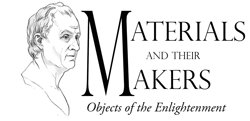The color of the panels throughout the Tésse Room at the Metropolitan Museum of Art is a hybrid color most similar to a celadon green. It is known that the appetite for color throughout eighteenth-century Europe was widespread and permeated all arenas of the social world. Understandings of what makes a good color, or more specifically, a color that is “in vogue,” depended in the eighteenth century, as it does today, on taste and trends. Scholar Sarah Lowengard describes two reigning disciplines of aesthetic in relation to eighteenth-century colors in her book, The Creation of Color in Eighteenth Century Europe; colors that are vibrant and fashionable (like the Sèvres ground colors) and colors that are intense in hue, like the Tésse Room green. Intense colors, in so far as Lowengard details, are colors important to eighteenth century interiors and decorative arts that are not, per say, beautiful like the lively fashionable colors, but nonetheless have a place in eighteenth-century color pallets.
For more information on the Tésse Room Green, please see:
Lowengard, Sarah. The Creation of Color in Eighteenth-Century Europe [electronic Resource]. New York, N.Y.: Columbia University Press, 2006.
Kislik-Grosheide, Daniëlle O., and Jeffrey Munger. The Wrightsman Galleries for French Decorative Arts, the Metropolitan Museum of Art. New Haven: Yale University Press, c2010.
Lowengard, Sarah. “Colour Quality and Production: Testing Colour in Eighteenth-Century France.” Journal of Design History 14, no. 2 (January 1, 2001): 91–103.

